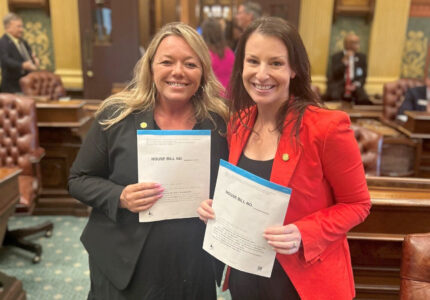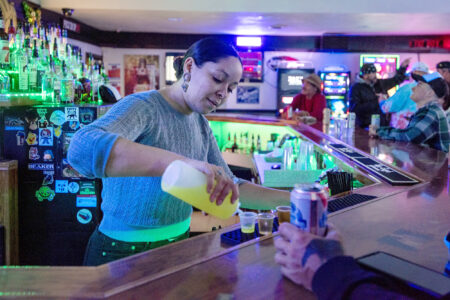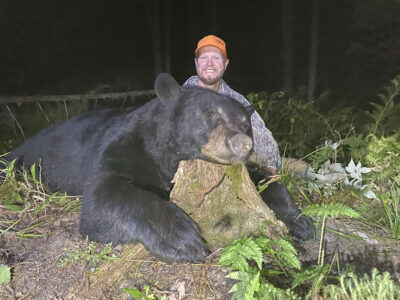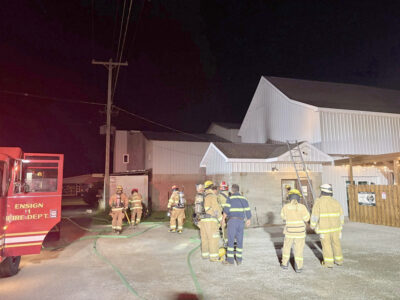Bar industry adjusts as alcohol use hit record low
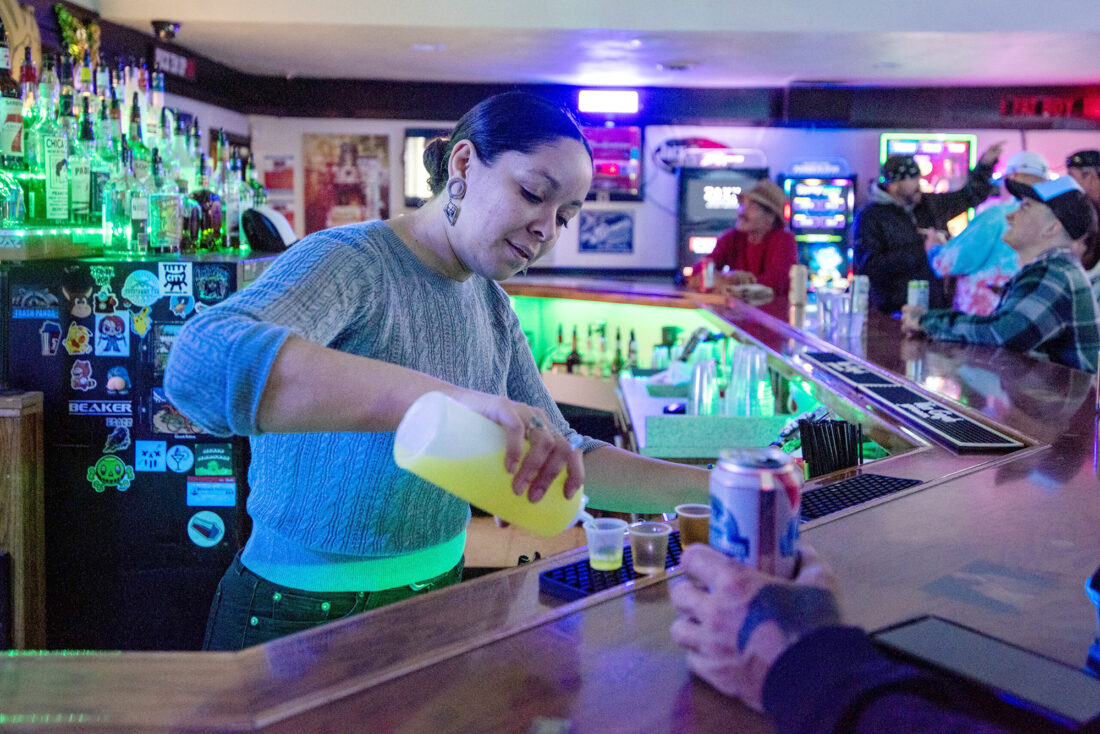
Drinks are poured at Zoxx Social Club in Janesville, Wis. (Angela Major/Wisconsin Public Radio)
Fox River House brands itself as “Appleton’s oldest saloon,” but the bar has offered a growing selection of nonalcoholic options in recent years.
Cassidy Evers, one of the bar’s co-owners, said it has an entire shelf in its cooler that is completely alcohol free, from nonalcoholic craft beers to THC drinks. And she said the bartenders are happy to mix a mocktail, as well.
While Appleton routinely ranks among America’s drunkest cities, she said the nonalcoholic options help make sure those coming to the bar to hang out with friends or enjoy live music feel comfortable and don’t feel pressured to drink.
“A lot of people that choose not to drink think they can’t participate in the bar and go to shows and be in that bar environment without drinking,” Evers said. “But there’s actually a huge culture that has pushed towards still going and knowing that they don’t have to (drink), and not feeling the pressure to participate in alcohol.”
And Fox River House isn’t the only place seeing that trend.
A new Gallup poll shows the share of adults in the United States who say they drink alcohol has fallen to its lowest point in the nearly 90 years. In 2025, 54% of Americans reported drinking alcohol, down from 58% in 2024, 62% in 2023 and 67% in 2022.
According to Gallup, a majority of Americans, 53%, now say moderate alcohol consumption is bad for your health. That’s up from 45% in 2024 and 39% in 2023.
There are some signs that Wisconsin has experienced a similar trend. Roughly 70% of Wisconsinites drank alcohol as of 2005. That was down to 66% in 2013 and 61% in 2023, according to data from Trace One, a food and beverage software company.
Mark Jefferson, executive director of the Tavern League of Wisconsin, said bars across the state are adapting with the times. He said establishments are serving more food, offering more nonalcoholic drink options and leaning into chances to offer recreational opportunities, like sponsoring leagues for softball, darts or horseshoes.
“It’s important for our taverns to adapt and continue to be a part of the fabric of the state because they provide a lot of color, a lot of character, and that outlet from the social media and the other things that are going on out there that really have a tendency to divide us,” he said. “This is one of the few things left that really pulls us together.”
While bars are expanding their nonalcoholic options, Evers said alcohol sales are still Fox River House’s bread and butter.
“We are still Appleton, Wisconsin,” she joked.
Maureen Busalacchi is director of the Wisconsin Alcohol Policy Project at the Medical College of Wisconsin. She said it’s encouraging that the Gallup poll showed a change in attitudes around drinking.
“It’s been a long time coming,” she said. “I think it’s important that we think about other things to do, rather than just drink alcohol, in terms of being social (and) getting together with folks.”
She said Wisconsin’s drinking culture often normalizes drinking, without enough emphasis on the negative consequences that alcohol consumption can have.
Binge drinking in Wisconsin costs almost $4 billion a year in lost productivity, health care, criminal justice and other costs, according to a 2019 report from the University of Wisconsin-Madison.
Busalacchi said daily drinking — even at low levels — can raise the risk of cancer, heart disease and cause damage to the liver.
“Two to three drinks a day is a way of destroying your liver,” Busalacchi said. “It’s a path to doing that, and I don’t think people understand the amount of risk that there is in terms of their health.”
The age group in the Gallup poll that had the biggest share of people who believe drinking is bad for health was 18- to 34-year-olds. Sixty-six percent of that demographic viewed drinking as bad for health, compared with 50% of 35- to 50-year-olds and 48% of adults 55 or older.
The share of younger adults who reported drinking was down from 59% in 2023 to 50% in 2025, according to Gallup.
Jenny Damask, assistant director for high-risk drinking prevention at UW-Madison, said a fall 2024 survey of first-time undergraduate students at UW-Madison showed that 61% reported they had not used alcohol in the prior two weeks. That’s up from 37% who said the same in 2015, she said.
Damask also said UW-Madison is trying to offer “substance-free” events and spaces to help students who do not drink feel a sense of community on campus after surveys showed nondrinkers had “lower levels of belonging.”
“I think sometimes people have this perception that belonging … is tied to high-risk drinking,” she said. “We want to uncouple high-risk drinking and sense of belonging. That’s really important.”

